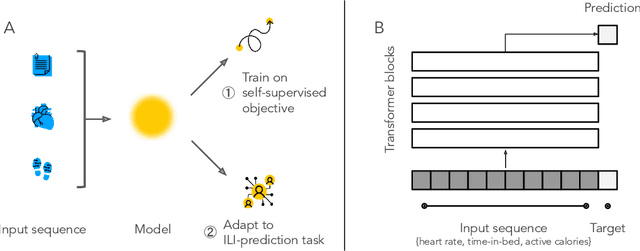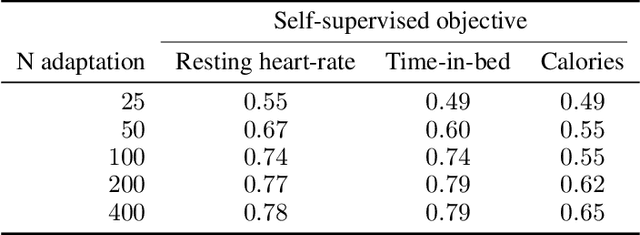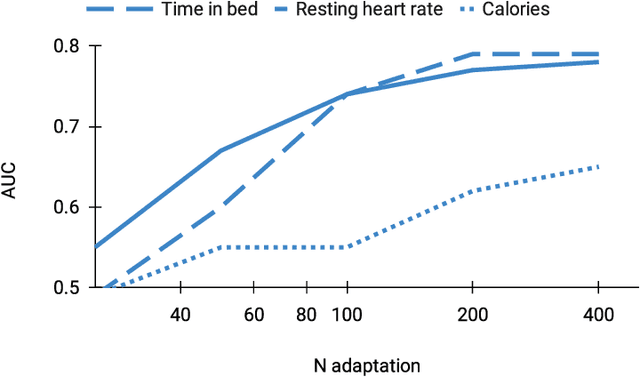Raghu Kainkaryam
Self-supervision of wearable sensors time-series data for influenza detection
Dec 27, 2021


Abstract:Self-supervision may boost model performance in downstream tasks. However, there is no principled way of selecting the self-supervised objectives that yield the most adaptable models. Here, we study this problem on daily time-series data generated from wearable sensors used to detect onset of influenza-like illness (ILI). We first show that using self-supervised learning to predict next-day time-series values allows us to learn rich representations which can be adapted to perform accurate ILI prediction. Second, we perform an empirical analysis of three different self-supervised objectives to assess their adaptability to ILI prediction. Our results show that predicting the next day's resting heart rate or time-in-bed during sleep provides better representations for ILI prediction. These findings add to previous work demonstrating the practical application of self-supervised learning from activity data to improve health predictions.
 Add to Chrome
Add to Chrome Add to Firefox
Add to Firefox Add to Edge
Add to Edge